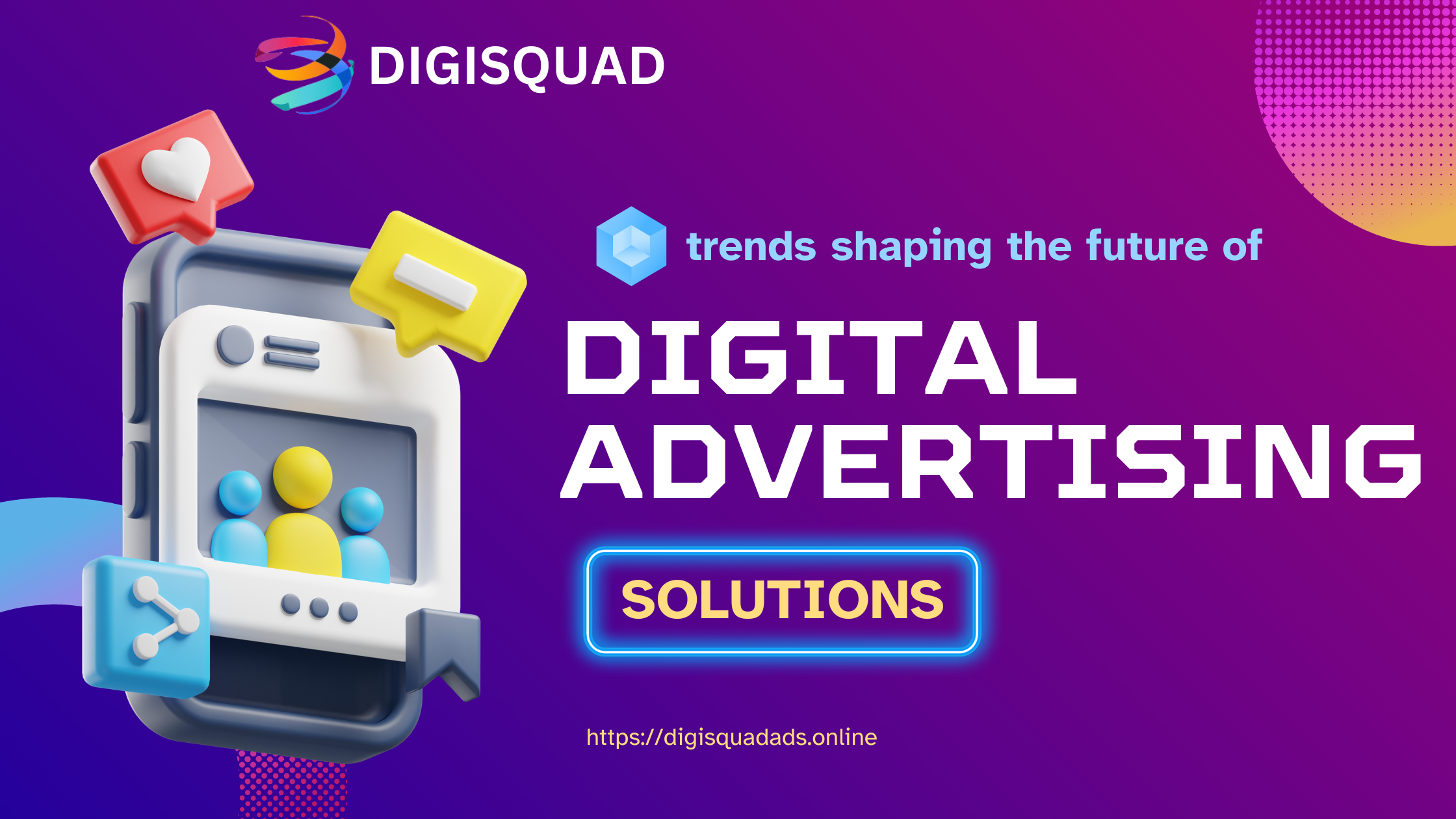Trends Shaping the Future of Digital Advertising, In the ever-evolving landscape of digital advertising, staying ahead of trends is crucial for marketers and advertisers aiming to reach and engage their target audiences effectively. The dynamics of consumer behavior, technological advancements, and the digital ecosystem contribute to the continuous evolution of advertising strategies. In this comprehensive guide, we’ll explore the key trends shaping the future of digital advertising.
1. Augmented Reality (AR) Integration
Enhancing User Experience: AR is increasingly being used to create immersive and interactive ad experiences. Brands can leverage AR to allow users to virtually interact with products before making a purchase decision.
Virtual Try-Ons: Industries like fashion and beauty are incorporating AR for virtual try-on experiences, enabling users to visualize products in real time through their devices.

2. Video Dominance
Short-Form Videos: Platforms like TikTok have popularized short-form video content. Marketers are exploring concise, engaging videos for ad campaigns to capture audience attention in a crowded digital space.
Live Streaming: The rise of live streaming on platforms like Instagram and Facebook has opened new avenues for real-time interaction between brands and their audience.

3. Voice Search Optimization
Optimizing for Conversational Queries: As voice-activated devices become ubiquitous, advertisers need to optimize content for conversational queries. Understanding user intent in voice searches is crucial for effective ad targeting.
Personalized Voice Experiences: Brands can leverage voice assistants to deliver personalized messages, creating a more intimate connection with users.

Dynamic Ad Targeting: AI and ML enable dyna
4. Artificial Intelligence (AI) and Machine Learning (ML)
mic ad targeting, allowing advertisers to tailor content based on user behavior and preferences. This leads to more personalized and relevant ad experiences.
Automated Ad Creation: AI-driven tools can generate ad creatives, analyze performance data, and optimize campaigns in real-time, reducing manual efforts and enhancing efficiency.

5. Programmatic Advertising
Automated Ad Buying: Programmatic advertising continues to gain momentum, automating the buying and placement of ads. This results in more efficient ad spend and better targeting capabilities.
Data-Driven Decision Making: Leveraging data analytics in programmatic advertising allows marketers to make data-driven decisions, ensuring that ads are delivered to the most relevant audiences.

6. Interactive Content
Engagement-Driven Campaigns: Interactive content, such as polls, quizzes, and shoppable posts, encourages active participation from users. Brands can use these formats to enhance engagement and gather valuable data.
Gamification in Advertising: Incorporating gaming elements into ads makes the experience more enjoyable for users, fostering brand interaction and loyalty.

7. Privacy-Centric Advertising
User Consent and Transparency: With increasing concerns about data privacy, advertisers are focusing on transparent communication and obtaining user consent. Implementing strategies that prioritize user privacy builds trust and credibility.
Contextual Targeting: Advertisers are exploring contextual targeting as an alternative to third-party cookies, ensuring that ads are placed based on the context of the content rather than individual user tracking.

8. Ephemeral Content
Stories and Disappearing Content: Platforms like Instagram and Snapchat popularized ephemeral content. Advertisers are leveraging the temporary nature of stories to create a sense of urgency and exclusivity in their campaigns.
User-generated Content in Stories: Encouraging users to create and share content through stories builds a sense of community and authenticity around a brand.

9. Cross-Platform Advertising
Seamless User Experience: Advertisers are focusing on creating a seamless experience for users across various platforms. Consistent messaging and design elements ensure brand recognition and a cohesive user journey.
Omni-Channel Marketing: Integrating campaigns across multiple channels, including social media, search engines, and websites, maximizes reach and impact.

10. Blockchain Technology
Transparency in Ad Transactions: Blockchain technology is being explored to bring transparency to the often complex ad supply chain. It can reduce fraud, ensure accurate attribution, and create a trustworthy environment for advertisers.
Token-Based Rewards: Some platforms are incorporating blockchain to implement token-based reward systems, encouraging user engagement with ads through incentives.

Conclusion
As the digital advertising landscape continues to evolve, staying informed about these trends is crucial for advertisers aiming to create impactful campaigns. Embracing innovation, leveraging new technologies, and understanding the changing preferences of consumers will be key to navigating the future of digital advertising successfully. By incorporating these trends into their strategies, advertisers can position themselves at the forefront of a dynamic and competitive industry, ensuring their messages resonate effectively with their target audiences.


1 thought on “Trends Shaping the Future of Digital Advertising”